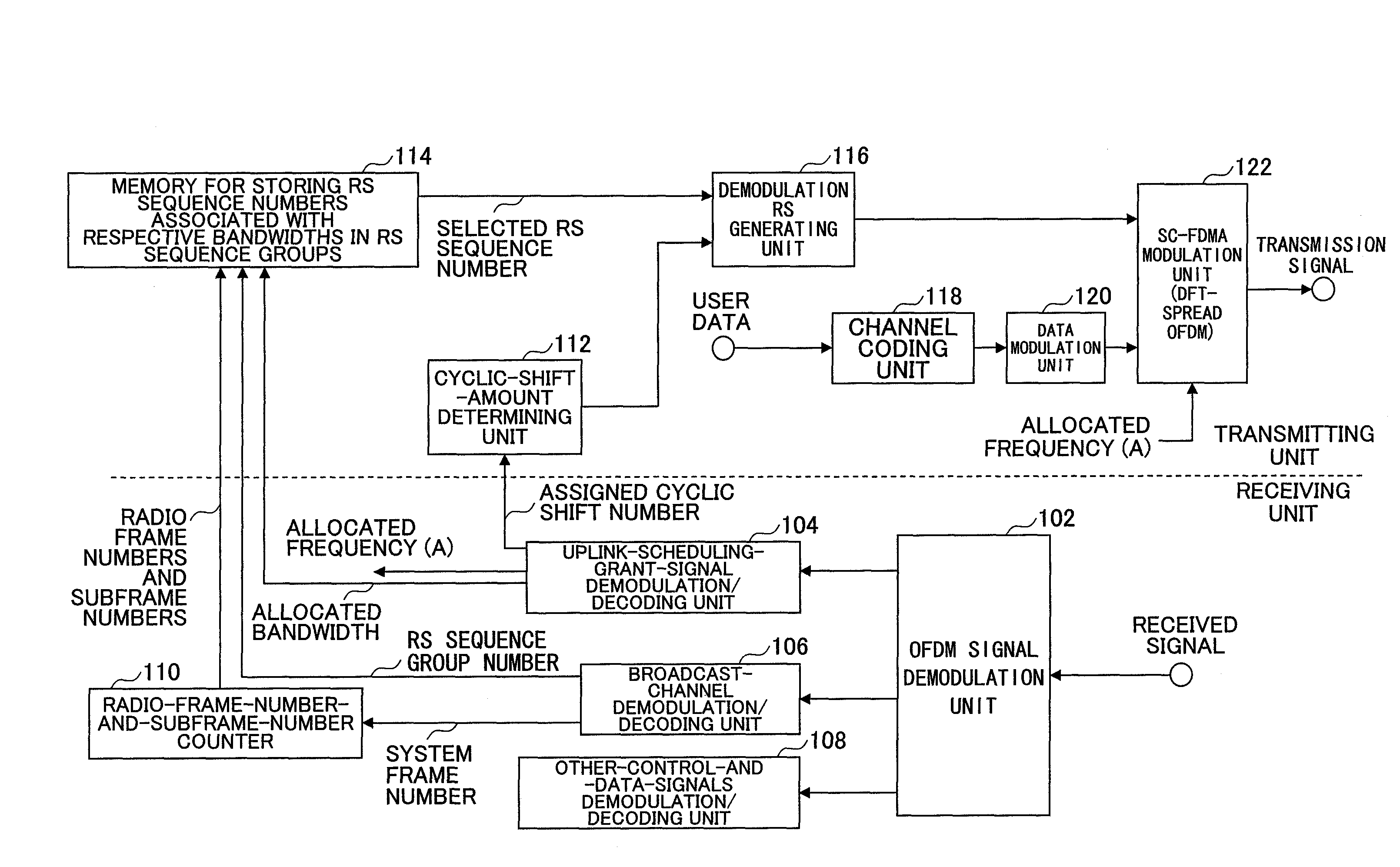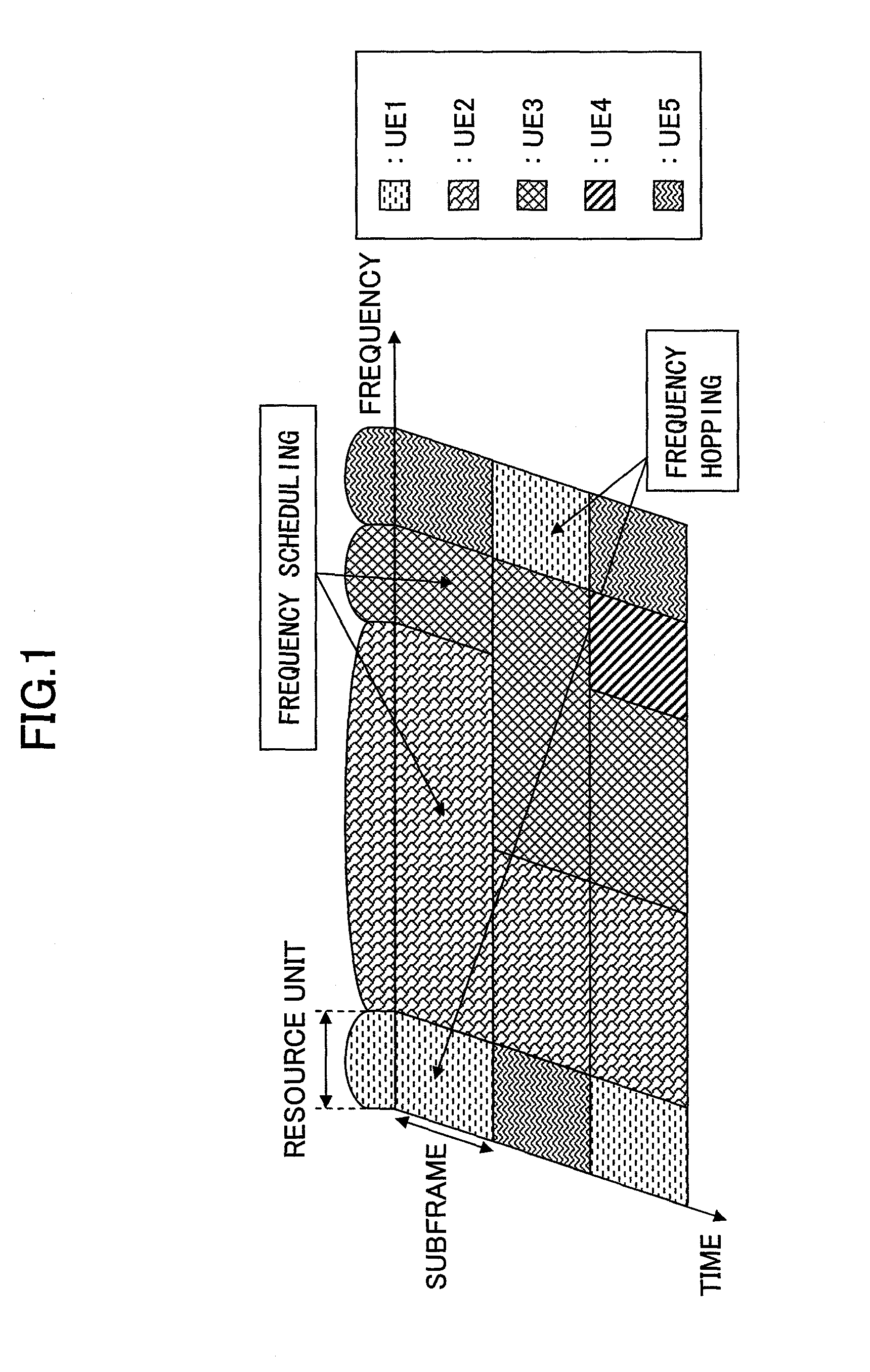Base station, mobile station, radio communication system, and communication control method
a radio communication system and base station technology, applied in the field of radio communication systems, can solve the problems of high interference between a pilot channel of a user and a pilot channel of a different user, low accuracy of channel estimation, and high frequency of channel estimation, so as to reduce the influence of characteristic degradation
- Summary
- Abstract
- Description
- Claims
- Application Information
AI Technical Summary
Benefits of technology
Problems solved by technology
Method used
Image
Examples
Embodiment Construction
[0071]Embodiments of the present invention are described below with reference to the accompanying drawings. Throughout the accompanying drawings, the same reference numbers are used for parts having the same functions, and overlapping descriptions of those parts are omitted.
[0072]A radio communication system 1000 including mobile stations and a base station according to an embodiment of the present invention is described below with reference to FIG. 5.
[0073]The radio communication system 1000 is based on, for example, Evolved UTRA and UTRAN (also called Long Term Evolution or Super 3G). The radio communication system 1000 includes a base station (eNode B: eNB) 200 and mobile stations 100n (1001, 1002, 1003, . . . 100n; n is an integer greater than 0). The base station 200 is connected to an upper node such as an access gateway 300 and the access gateway 300 is connected to a core network 400. The mobile stations 100n are in a cell 50 and communicate with the base station 200 accordi...
PUM
 Login to View More
Login to View More Abstract
Description
Claims
Application Information
 Login to View More
Login to View More - R&D
- Intellectual Property
- Life Sciences
- Materials
- Tech Scout
- Unparalleled Data Quality
- Higher Quality Content
- 60% Fewer Hallucinations
Browse by: Latest US Patents, China's latest patents, Technical Efficacy Thesaurus, Application Domain, Technology Topic, Popular Technical Reports.
© 2025 PatSnap. All rights reserved.Legal|Privacy policy|Modern Slavery Act Transparency Statement|Sitemap|About US| Contact US: help@patsnap.com



